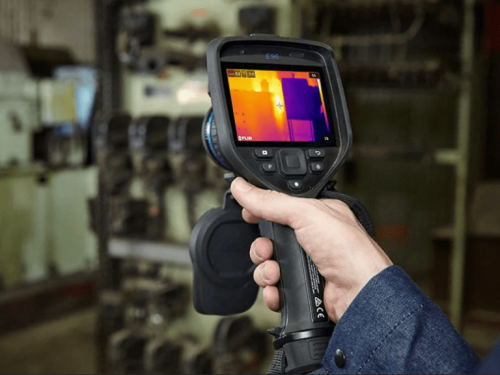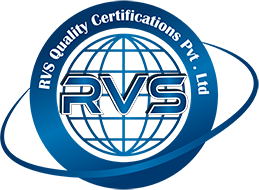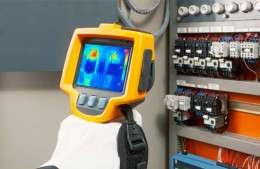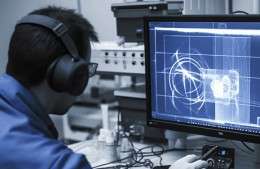I have been out of industrial activity after completing my graduation for about 2 years, then RVS Quality Certifications Pvt Ltd has changed my outlook on my career. Adopting a course in NDT has helped me launch my career.
What Makes Infrared Thermography Services an Important Diagnostic Tool
- By: What Makes Infrared Thermography Services An Important Diagnostic Tool

Infrared thermography is gaining more significance among diagnostic means across various industries, from construction and manufacturing to electrical maintenance and mechanical engineering. It offers a chance to see a problem arising in systems or equipment before it leads to failure. This happens when Infrared Thermography Services from RVS Quality Certifications Pvt. Ltd. identify heat distribution and anomalies in the thermal field. We shall understand why infrared thermography is so valuable, what benefits it holds, and how it combines well with other methods such as PAUT and Third Party Inspection Services.
The Basics of Infrared Thermography
Infrared thermography is a non-contact method of diagnostics that delivers real-time visual presentation of surface temperature variations of an object. By converting infrared radiation into temperature data, this method helps unveil invisible issues, such as overheating components, insulation faults, and air leaks. Because thermal anomalies often denote existing problems, infrared thermography allows for preventive maintenance, thus preventing unforeseen breakdowns and extending equipment life.
Key Benefits of Infrared Thermography Services
-
Non-Invasive Testing: This type of testing does not disrupt the normal working of the machines, which makes infrared thermography a non-destructive testing technology. Therefore, such a diagnosis may help to avoid downtimes.
-
Early Problem Detection: Its detection capabilities do not only introduce problems like electrical faults or overheating of mechanical systems but also structural weaknesses long before they become major ones.
-
Cost Efficiency: Since the problems are detected in time, there will be savings of some time before you run into costly repairs or production stops. Avoidance of surprise failures helps companies minimize maintenance expenses and downtime not budgeted for.
-
Wide Range of Applications: Infrared thermography can be applied in many different applications. One of the most common applications includes its use in inspecting electrical circuits and mechanical equipment. Assessments of insulation in buildings as well as critical infrastructure, such as pipelines, are also very common uses of infrared thermography.
Infrared Thermography and PAUT
In contrast to infrared thermography, which focuses on temperature defects, Phased Array Ultrasonic Testing is another important diagnostic technique used in the detection of internal defects within a material by the use of high-frequency sound waves. Unlike classical ultrasonic testing, PAUT employs multiple sound wave beams, thus providing a resolution of the inner structure of the inspected article, enhancing accuracy and resolution.
For instance, the inspection can take a holistic approach in oil and gas, aerospace, and manufacturing by combining infrared thermography with PAUT. Thermography may point out any possible hotspots; with PAUT, one can go deeper into the material's integrity inspection inside. For example, the thermography may raise an alarm on an area of the pipeline under suspect review, after which PAUT can be done to ascertain if there is some interior corrosion or fractures to ensure that the problem gets inspected perfectly.
Third-Party Inspection Services: Ensuring Reliable Results
Third-party examination services bring reliability and guarantee to industries that value safety and quality. Independent organizations conduct their extensive checks to ensure that all the set standards and regulations are complied with. Whether in construction, oil, gas, or manufacturing, Third-Party Inspection Services guarantee that materials, workmanship, and proper safety measures are according to code.
Third-party inspections help integrate infrared thermal scanning to detect thermal anomalies or overheating situations very early. Supplementary methods such as PAUT may also be included to aid in the overall evaluation of systems and their components. It is through third-party inspections that a business can appropriately maintain compliance and minimize risks, thus seeing to it that the assets would last long.
Its diagnostic capabilities in the provision of Infrared thermal scanning make it a very fundamental tool when it comes to early detection of problems, loss of time, and reduced costs on later maintenance actions. Coupled with methodologies such as PAUT and under third-party examination services, businesses can closely access the systems through inspection and testing for better reliability in evaluation. The use of advanced technologies ensures higher operational efficiency, safety, and compliance with requirements in the industrial environment today.
RVS is the absolute best value to learn Aerospace NDT Training Course to nurture my skills. I am completely satisfied with how affordable the service they provide. Thanks RVS Team for constant support.
I would like to thank RVS for their time and patience in helping me learn and grow with my NDT courses. I was able to work and learn at the same time, with no pressure. I would recommend RVS to anyone seeking to work and take courses at the same time. I accomplished the course and today I'm a Certified PCN Level II UT engineer.
RVS helped our new hires to acquire the comprehensive training they need, as well as for refresher courses for our current employees. This has worked well for us in obtaining the necessary NDT certifications.
Just a few lines to express my gratitude for your outstanding service over the past year. We would have no issue in referring to your organisation because of your customer devotion and professionalism.
NDT is employed in a wide range of industries, including oil and gas, aerospace, energy, power, nuclear, and transportation, with nearly endless career opportunities. A job in NDT is extremely dynamic, and ongoing training is required.
One of the advantages of a four-year NDT programme is that students can study in a more focused and instructive manner. For graduates, this offers up a plethora of new NDT employment options, including quality assurance, management, engineering design, research, NDT training, and teaching.
Non-Destructive Testing (NDT) Training Courses - Levels 1, 2 and 3.
The PCN (Personnel Certification in Non-Destructive Testing) is a programme that meets the BS EN ISO 9712 requirements for NDT technicians and supervisors. It is founded in the United Kingdom, but it has an impact on a number of countries in the European Union.



-is-the-best-career-optioneE6f.jpg)




